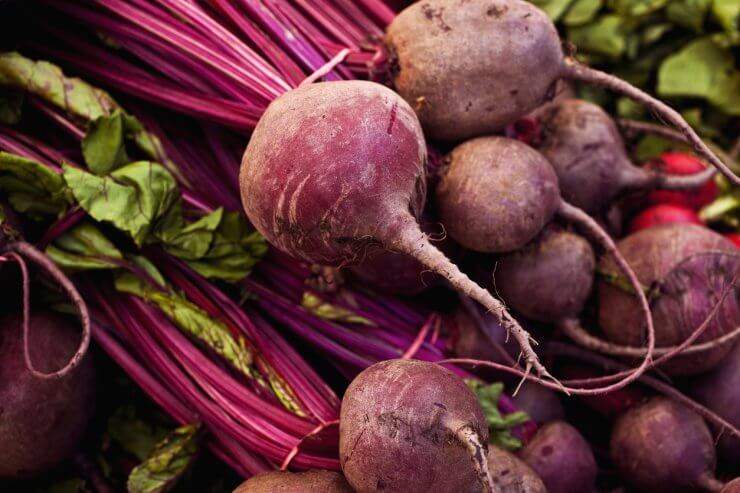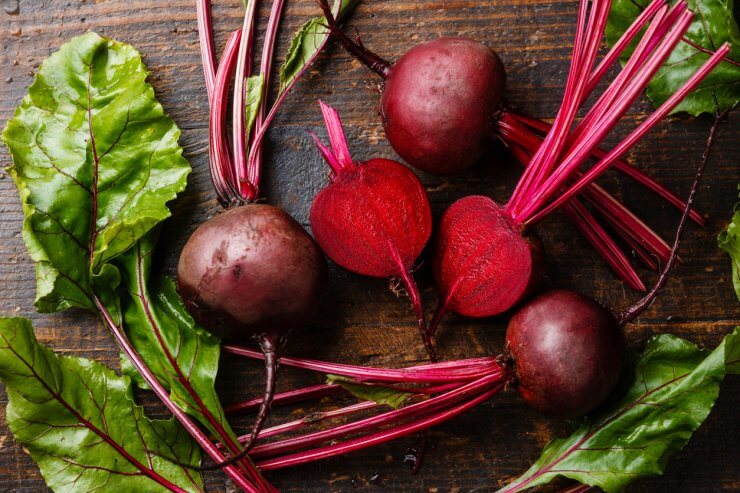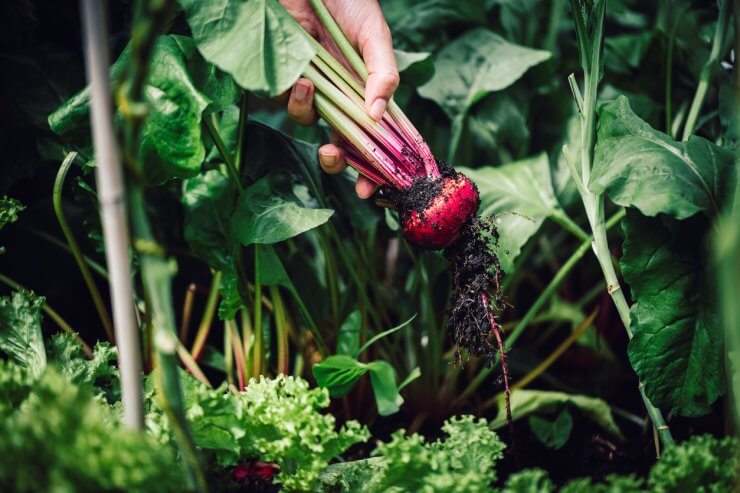
Most gardeners think of beets as a cool-season crop, and they’re not wrong – these ruby-red roots do prefer temperatures between 60–65°F. But here’s a little-known secret: with the right varieties and techniques, you can absolutely grow delicious beets even when summer temperatures soar into the 80s and 90s. The key is understanding what makes beets bolt and how to outsmart Mother Nature’s timing.
Beets are biennial plants, meaning they naturally want to complete their life cycle over two seasons. When exposed to stress, particularly heat combined with long daylight hours, they assume winter has passed and rush to flower and set seed. This process, called bolting, turns your tender roots woody and bitter. The plant puts all its energy into that tall flower stalk instead of the sweet, earthy root you’re after.
Here’s something fascinating: beets are actually related to spinach and Swiss chard (they’re all in the Amaranthaceae family), which explains why they share similar heat-sensitivity traits. But unlike their leafy cousins, beets store energy in their roots, giving us more flexibility in timing our harvests.
Heat-Tolerant Varieties of Beets
Not all beets are created equal when it comes to heat tolerance. Skip the classic ‘Detroit Dark Red’ for summer plantings and reach for these heat warriors:
‘Chioggia’ beets, with their stunning pink and white concentric rings, actually handle heat better than most solid-colored varieties. Originally from Italy’s warm Mediterranean coast, they’ve been selected for warm-weather performance for centuries. ‘Red Ace’ is another champion, this hybrid was specifically bred for bolt resistance and maintains its tender texture even in challenging conditions.
For something completely different, try ‘Bull’s Blood’ beets. While grown primarily for their gorgeous burgundy leaves, the roots are perfectly edible and the plants show remarkable heat tolerance. The deep red foliage also makes an excellent living mulch for neighboring plants.
Timing Is Everything

In warm climates, successful beet growing is all about strategic timing. You have two main windows: early spring before the heat hits, and late summer for fall harvest. For the spring crop, start seeds indoors 6–8 weeks before your last frost date, then transplant out while soil temperatures are still cool.
The real magic happens with succession planting. Instead of sowing one large crop, plant small rows every 2–3 weeks. This spreads your harvest and increases your chances of success, if one planting struggles with an unexpected heat wave, your next one might hit perfect conditions.
Creating Microclimates
You can actually modify the growing environment around your beets to keep them cooler. Afternoon shade is crucial, even heat-tolerant varieties appreciate protection from the most intense sun. Plant them on the east side of taller crops like tomatoes or peppers, or use shade cloth providing 30–50% coverage during the hottest part of the day.
Mulching becomes absolutely critical in warm weather. A thick layer of straw, shredded leaves, or grass clippings can lower soil temperature by 10–15°F. This isn’t just about the roots, cooler soil means less stress on the entire plant, reducing the likelihood of bolting.
Watering Your Beets
Consistent moisture is your best friend when growing beets in heat. Stress from drought will trigger bolting faster than high temperatures alone. The trick is watering deeply but less frequently, this encourages deep root growth and helps plants better withstand heat stress.
Here’s a professional tip: water early in the morning so plants can fully hydrate before facing the day’s heat. Avoid evening watering in humid climates, as this can promote fungal diseases when plants stay wet overnight in warm conditions.
Growing Beets in Containers
Growing beets in containers gives you incredible control over their environment. Use light-colored pots (dark containers absorb heat) and move them to shadier spots during heat waves. Container beets also tend to mature faster, letting you harvest before the worst summer heat arrives.
Choose round varieties like ‘Chioggia’ or ‘Golden’ for containers, they develop better in restricted spaces than long, cylindrical types. A 12-inch deep container can easily accommodate several beet plants.

In warm climates, harvest timing becomes even more critical. Check your beets regularly once they reach about 1.5 inches in diameter, they can go from perfect to woody surprisingly quickly in hot weather. Baby beets harvested at golf ball size are often sweeter and more tender than their fully-mature counterparts anyway.
Don’t forget about the greens! Beet leaves are nutritious and delicious, and harvesting outer leaves actually helps the plant focus energy on root development. In hot weather, the greens might be your most reliable harvest.
With these strategies, you’ll be pulling sweet, tender beets from your garden even when the thermometer climbs. It’s all about working with the plant’s natural tendencies rather than fighting against them.
What’s your secret weapon for keeping root crops happy during scorching summer days? Let us know in the comments.
Want to grow your own beets? Beets are the crown jewels of vegetables. Not only do they come in jewel tones of ruby and amber, but they are easy to grow and so nutritious! A cool weather crop, beets can be enjoyed from late spring into deep fall. Learn what it takes to add beets to your garden in our Beets Gardening Guide. We’ll explain how to choose the beets that are right for you, how to get them started, and how to enjoy them after harvest.


 Previous
Previous

